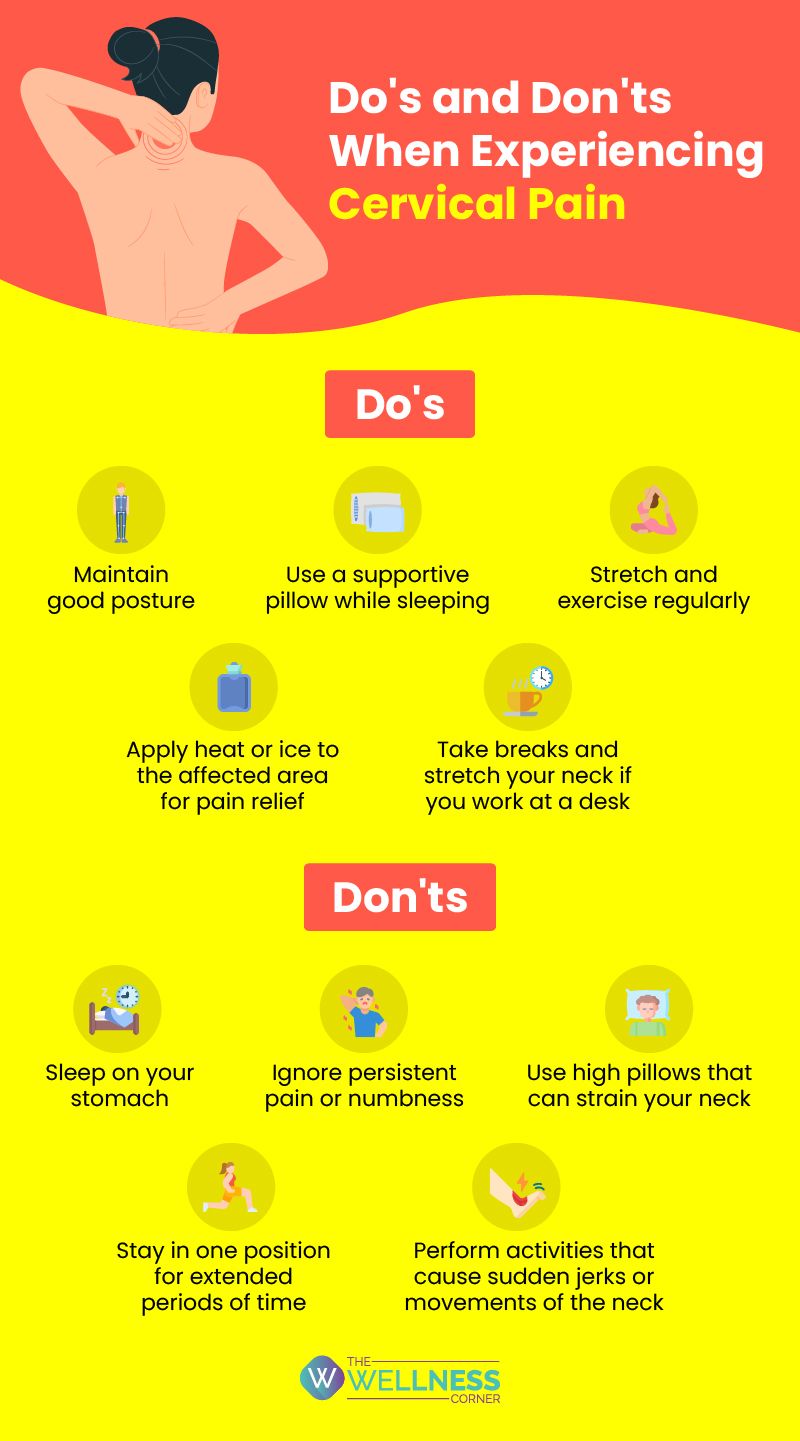Tips To Manage Chronic Cervical Pain
32 months ago
4 minute read.

Chronic cervical pain affects millions of people all around the world. It is characterized by persistent pain and discomfort in the neck and shoulders, which can have a significant impact on a person's quality of life.
Neck pain is a common problem that can gradually develop over time due to various reasons such as arthritis, degenerative disc disease, poor posture, weak muscles, stress, and lack of sleep. Simple everyday activities such as holding a phone between your shoulder and ear or sitting at a computer for extended periods can worsen the pain.
What is Cervical pain?
Cervical pain refers to discomfort, soreness, or stiffness that occurs in the neck area, which is the part of the spine that connects the skull to the shoulders. The neck is composed of seven cervical vertebrae that support the head and allow it to move in different directions.
When any of the structures in the neck region, such as muscles, ligaments, bones, or nerves, are affected by injury, inflammation, or degeneration, it can result in cervical pain.
Some common causes of cervical pain include poor posture, which can place strain on the neck muscles and joints, especially when sitting or standing for long periods of time. Injuries, such as whiplash from a car accident or a fall, can also cause cervical pain.
Neck discomfort is usually not a serious condition and can be relieved within a few days.
Cervical pain symptoms
Neck pain can manifest in different ways depending on the underlying cause and severity of the condition. Symptoms of neck pain may include:
- Pain or discomfort
- Stiffness
- Headaches
- Muscle spasms or tightness
- Numbness
- Swelling
- Pain that radiates down the arms or into the upper back.
Causes of cervical pain
Muscle strains
It is usually from activities like:
- poor posture
- jerking your neck during exercise
- long working hours
- sleeping in a bad position
[Also check: Yoga poses to fix back and neck pain issues]
Meningitis
Meningitis is a condition in which inflammation of the thin tissue layer that surrounds the brain and spinal cord. Symptoms of meningitis may include a stiff neck, headache, nausea, vomiting, sensitivity to light, and fever.
Injury
Neck discomfort can come from trauma and other injuries to the muscles, ligaments, discs, vertebral joints, and nerve roots of the spinal cord. Whiplash is a common injury that causes neck pain in car accidents.
Mental stress
Tightening your neck muscles due to stress can create neck discomfort and stiffness. Many people who tighten these muscles when they are upset or angry are unaware until their neck begins to pain.
[Also check: Yoga for stress management]
Growths
Tumors, cysts, and bone spurs are masses that can irritate the nerves in your neck and cause pain.

Treatment for cervical pain
The appropriate treatment for neck pain varies according to its underlying cause. To assist your doctor in diagnosing the root of your neck pain, you may require one or more tests or diagnostic exams. Which may include:
- Blood test
- X-ray
- CT scan
- MRI scan
- Electromyography
After the test result, the doctor will suggest some treatments. These treatments may include:
- Heat or cold therapy
- Massage therapy
- Acupuncture
- Physical therapy
- Antibiotics
- Muscle relaxants
- Painkillers
- Exercise and stretching
[Related: 7 non-invasive pain relief techniques that really work]

How to ease cervical pain at home
1) You can apply a heating pad or a cold compress to your neck to relieve pain. Heat can help to loosen tight muscles, while cold can reduce inflammation.
2) Gentle stretching can help to relieve tension in your neck muscles. Slowly tilt your head to one side, hold for a few seconds, and then repeat on the other side.
3) Massaging your neck can help to relieve tension and ease pain. Use your fingertips to massage the muscles in your neck in a circular motion.
4) Poor posture can put a strain on your neck muscles. Try to sit up straight and with relaxed shoulders.
5) If you spend a lot of time sitting at a desk or using a computer, take frequent breaks to stretch and move around.
6) A supportive pillow can help to keep your neck in a neutral position while you sleep.
7) Avoid cradling the phone between your neck and shoulder.
8) Do not use a neck brace or collar without your doctor’s approval. They may worsen your symptoms if you do not use them correctly.
Conclusion
Chronic cervical pain can be a challenging condition to manage, but many strategies can help. By incorporating exercise, good posture, heat or cold therapy, massage therapy, stress management techniques, and medication as needed, you can alleviate your symptoms and improve your quality of life. Consult with your healthcare provider before starting any new exercise or treatment program.
Leave a Comment
Related Articles
Health Checks @ Home
Service
Explore
© 2026 Truworth Health Technologies Pvt. Ltd.





